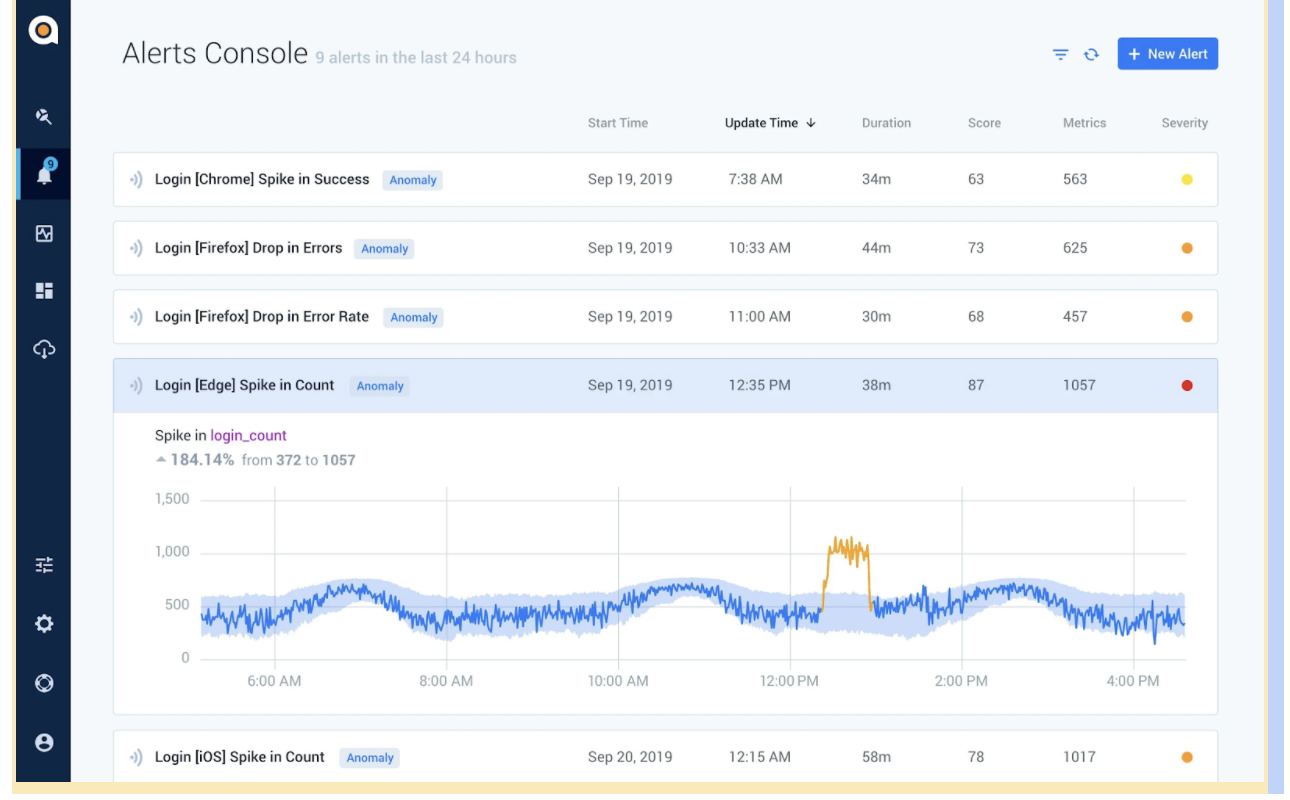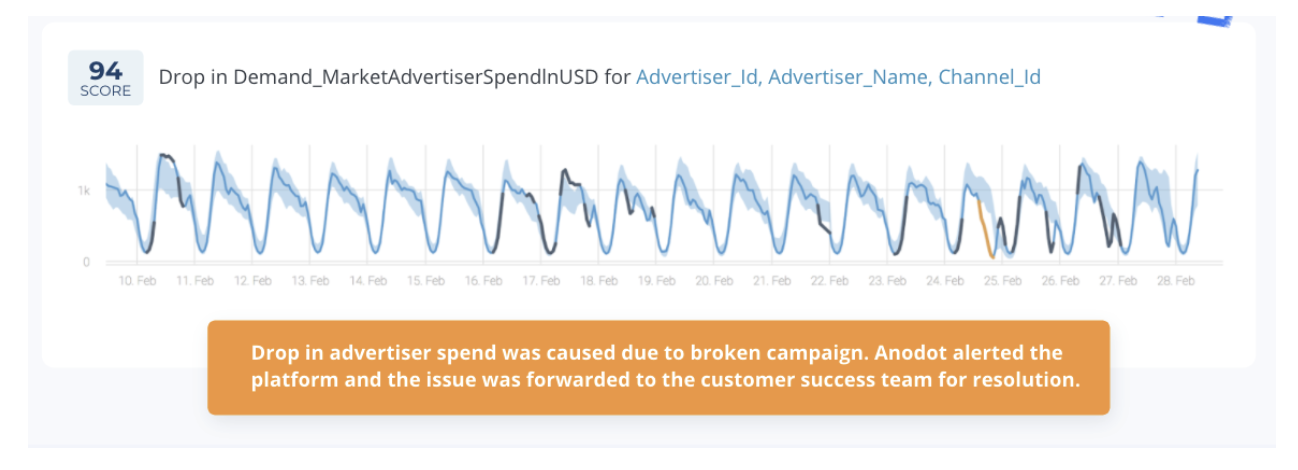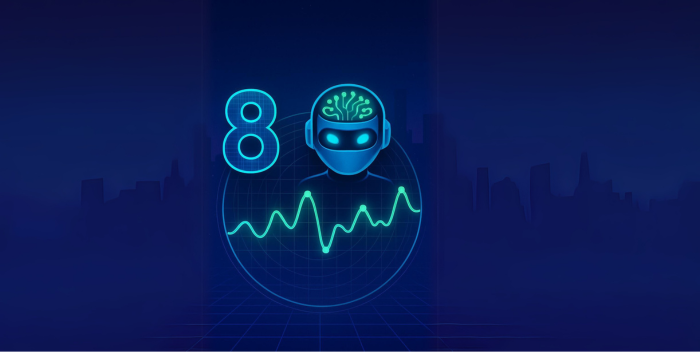Customer experience analytics is key to detecting costly incidents and identifying growth opportunities. The challenge with monitoring customer-related data is that it’s highly segmented, dynamic, and often seasonal in nature. For this reason, attempts at using the static thresholds and simple monitoring solutions that automatically detect anomalies in other, more predictable, areas of the business, such as the IT and application layers, either trigger too many false positives or miss granular changes.
As this challenge becomes more critical to digital businesses, data teams are either building in-house monitoring systems or searching for solutions that are built for the dynamic business layer. This article explores:
- The changing needs in customer experience monitoring
- How it’s being automated
- Use cases and business impact
The Need for Customer Experience Analytics
Monitoring the experience of both B2C and B2B customers has become increasingly demanding in the digital age. To meet these demands, vendors need to monitor 100% of customer data with greater visibility and granularity to ensure a high-quality experience.
Customer experience monitoring can be used to increase customer retention, revenue expansion, and enterprise value over time. Specifically, identifying potential issues before customers open a support ticket, discovering upselling opportunities, and preventing churn are all essential to staying ahead of the competition.
Many companies have previously used static monitoring tools for customer data, although individual customer usage is too volatile for these solutions to be effective. In particular, static thresholds often lead to alert storms filled with false positives, missing potential issues, or simply detecting issues too late.
Autonomous Customer Experience Monitoring
To deal with the complexity and volatility of the underlying data, customer experience monitoring requires an AI/ML-based autonomous monitoring solution. An autonomous solution must be capable of automatically adapting to changes in behavioral and usage patterns in real-time. In addition to adapting to fluctuating data, it must be able to detect and proactively alert support teams about potential issues before customers open a support ticket.
With the demands of customers, autonomous monitoring allows businesses to achieve their growth targets through a combination of proactive incident management and visibility into opportunities for revenue expansion. For example, Anodot automatically analyzes the following application and business metrics to uncover hidden insights in the data:
- Logins and active users
- Usage patterns
- Application usage
- Conversion rates
- Customer support tickets
With each of these KPIs, autonomous monitoring is able to learn the normal behavior, such as seasonal patterns and trends, and adapt as customer behavior changes over time.
Furthermore, autonomous monitoring allows billions of data points to be simultaneously analyzed and distilled into a single alert based on the severity of the anomaly. These real-time alerts are then grouped with correlated anomalies so that incident management teams can identify the contributing factors and root cause.
Use Cases of Customer Experience Monitoring
This section will take a closer look at two common use cases of real-world customer experience analytics: daily active users and ads being served.
Monitoring Changes in DAU
Daily active users (DAU) is a metric that provides companies with a leading indicator of customer actions such as in-app purchases, potential ad revenue, and other revenue-related metrics.
A significant drop in DAU can indicate an issue with the product, for example if users can’t log in or the page is taking too long to load. In either case, there is a high risk of churn if the issue isn’t addressed immediately.
In the example below, the “Active Users” metric counts the number of active users per customer. In this case, one of their customers had a massive drop in the number of users on a particular browser. Luckily, their customer success team received a real-time alert and reached out to the customer within the hour to resolve the issue. The shaded blue area in the chart shows how the system automatically adjusts its baseline to the metric’s unique behavior so that abnormal fluctuations, such as the one seen in orange, are more easily detected.
Monitoring Drops in Ads Being Served
Another example of customer experience analytics is monitoring for drops in the number of ads being served on specific platforms. While the customer may not be negatively impacted with a drop in ads, this can have a significant impact on revenue.
The chart below shows a sharp drop in the number of ad impressions, which alerted to the company within minutes. With correlated anomalies attached to the incident alert, the company was able to determine that there was an issue with video ads being served to a portion of the audience. Within a relatively short period of time the company was able to fix the issue and ad revenue returned to normal.
Summary: Autonomous Customer Experience Analytics
With the demands of both B2C and B2B customers, customer experience monitoring is essential to remaining competitive in today’s business landscape. Due to the constantly changing and volatile nature of customer data, static thresholds for incidents either miss opportunities altogether or leave teams overwhelmed from false positives and alert storms.
AI-driven solutions are capable of autonomously monitoring these metrics, but to do so accurately, the models should be able to learn and adapt to the patterns of each individual metric. To learn more about the disruptive aspect of AI analytics, check out Escape KPI Dashboard Hell.





